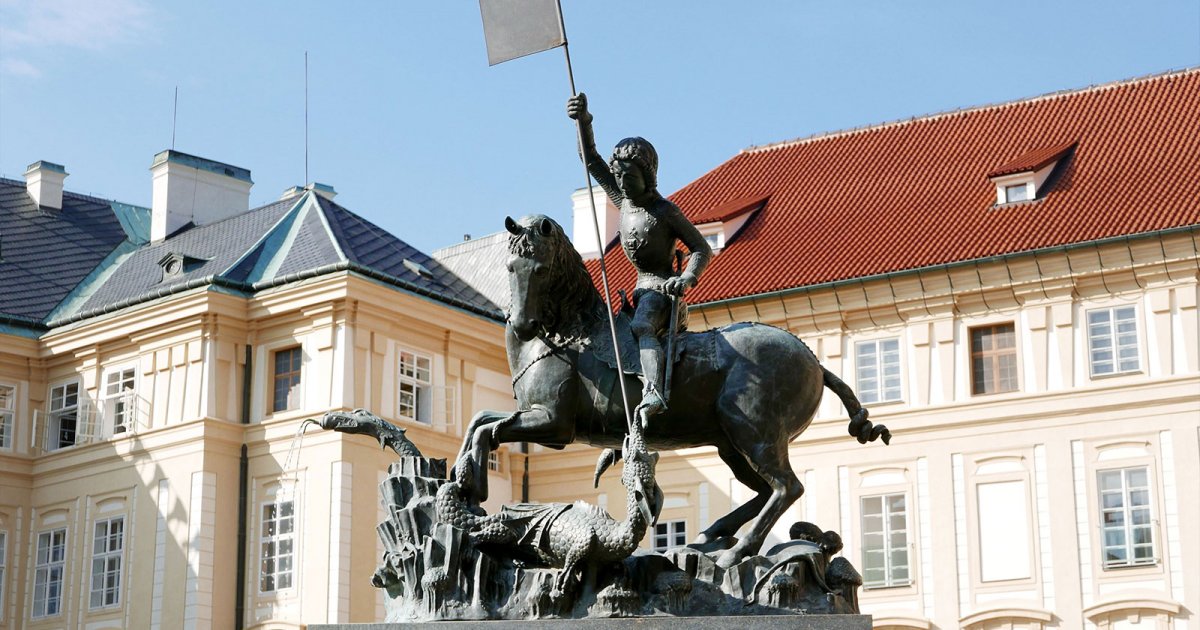CASTLE, Third Courtyard Royal Palace
 Language: English / USA
Language: English / USA
The third courtyard of the Castle is the largest and most spectacular, as is perfectly evident from the arch that leads into it, which stunningly frames the façade of the Cathedral.
The square is surrounded by the long, eighteenth-century wings of the Presidential Palace. The residence of the clerics entrusted with performing the ecclesiastic functions in the Cathedral stands next to it.
The magnificent paving and urban furnishings are the work of the Slovenian architect Joze Plecnik, who also designed the obelisk in memory of the fallen during the First World War. In the center of the square is a copy of a fourteenth-century bronze statue featuring Saint George and the Dragon.
The unevenly shaped square is spread around the jagged outline of the large Gothic church, and is bordered on the right by the oldest parts of the Old Royal Palace.
The palace was built in the 12th century, and given a new, fanciful Gothic appearance under Charles IV, but it was severely damaged by a fire in 1541, and the royal residence was thus transferred to the wing of the Castle around the second courtyard. The few surviving older parts are, however, extraordinarily beautiful.
The visit to the monumental rooms begins immediately after the entrance, with the Vladislav Hall, the heart of the royal apartments. This meeting room is over sixty meters long, and is covered with a splendid system of intertwined vaults, designed at the end of the 15th century by the architect Benedikt Ried, creating a spectacular effect. From here, you can look out towards All Saints Chapel, renovated in the 16th century. The rooms on the right, once part of the royal apartments, were redesigned in Renaissance style to house the imperial chancellery.
An interesting fact: the first room was the scene of the famous “defenestration of Prague” on 23 May 1618, when a number of representatives of the Protestant aristocracy threw two Catholic imperial governors and their secretary out of the windows, where they fell over 10 meters onto the manure left below by the peasants. No-one was seriously injured, and indeed the survival of the unfortunate victims was seen by the Catholics as a sign from God. Guests were thrown from the Castle three times in the fortress’s history, but this particular event marked the beginning of a war between Protestants and Catholics that lasted for 30 years.



